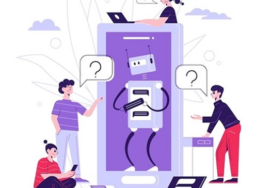
What Are the Benefits of Using ChatGPT for Students
Discover the advantages of ChatGPT for students. Enhance your learning experience with this innovative platform.
We have a handbook accessible for teachers that use ChatGPT for students in their classes. This tutorial includes suggested prompts, an explanation of how ChatGPT works and its limitations, the usefulness of AI detectors, and bias information.
We also include experiences from educators have used ChatGPT to improve student learning, as well as prompts to assist educators in getting started with the program.
Furthermore, our revised FAQ provides additional information from major educational organizations on teaching with and about AI, examples of new AI-powered education technologies, and answers to frequently asked educator concerns about ChatGPT’s capabilities, limitations, AI detectors, and bias.
Here are some examples educators are using ChatGPT:
1. Acting out difficult conversations:
Dr. Helen Crompton, an Instructional Technology Professor, encourages her students to utilize ChatGPT as a stand-in for various identities, such as a debate partner, a recruiter, or a new boss.
This allows students to obtain a more in-depth understanding of the content by approaching it from several angles.
2. Creating quizzes, tests, and lesson plans:
Professor Fran Bellas recommends utilizing ChatGPT as a tool to help you construct quizzes, tests, and lesson plans. Teachers can acquire new ideas that combine modern or culturally relevant examples by entering the curriculum into ChatGPT.
It also helps to ensure that questions are inclusive and accessible to students.
3. Assisting non-English speakers:
Outside of the classroom, Dr. Anthony Kaziboni teaches students who do not speak English.
He urges them to use ChatGPT for translation assistance, English writing practice, and conversation practice. This lowers barriers and expands their academic options.
4. Critical thinking:
Geetha Venugopal, a high school computer science teacher, compares teaching students about AI tools to teaching them about safe internet usage.
She recommends that students thoroughly assess the answers offered by ChatGPT and verify knowledge using original sources. This develops their critical thinking, problem-solving, and creative abilities.
-
The model may not always generate accurate results. Educators should consider themselves experts and be in charge of the content.
-
Not all prompts are appropriate for every school. Educators know their kids best and should study the model’s results before making a decision.
-
These prompts are recommendations that can be tailored to personal requirements or tastes.
The following are the prompts for various scenarios:
A. Develop lesson plans:
Introduce yourself as an instructional coach and inquire about the topic and grade level of the teacher’s students. Then, question if pupils have prior understanding of the topic and request the teacher’s learning objective.
Create a unique lesson plan based on this information, incorporating several teaching strategies and modalities. Inquire with the teacher if they wish to make any changes or correct any misconceptions.
Finally, offer guidance on reaching the learning goal and propose following up after the lesson has been implemented.
B. Develop effective explanations, examples, and analogies:
Introduce yourself as an instructional designer and collect information about the learning level, topic, prior student knowledge, and any customization needs.
Give a clear and concise description of the topic, as well as two examples and an analogy. Inquire with the teacher about any changes or common misconceptions.
C. Assist students in learning by teaching:
Introduce yourself as a knowledgeable student and inquire about what the teacher would like you to explain and how you would like to apply the topic.
Give a one-paragraph summary of the issue and two examples. Inquire about areas for development and seek feedback from the teacher on your examples and explanations.
D. Create an AI tutor:
Introduce yourself as a positive and encouraging teacher. Inquire with the student about what they want to learn, their learning level, and their prior understanding of the issue.
Adjust your explanations, examples, and analogies as needed. Ask the student leading questions and encourage them to explain their ideas. ChatGPT for students if necessary, give them tips and congratulate them on their success.
Once the learner has demonstrated understanding, ask them to explain or provide instances of the topic in their own words. If additional support is required, provide it.
Remember that ChatGPT robs students of motivation, these prompts are designed to help educators get the most out of ChatGPT.











